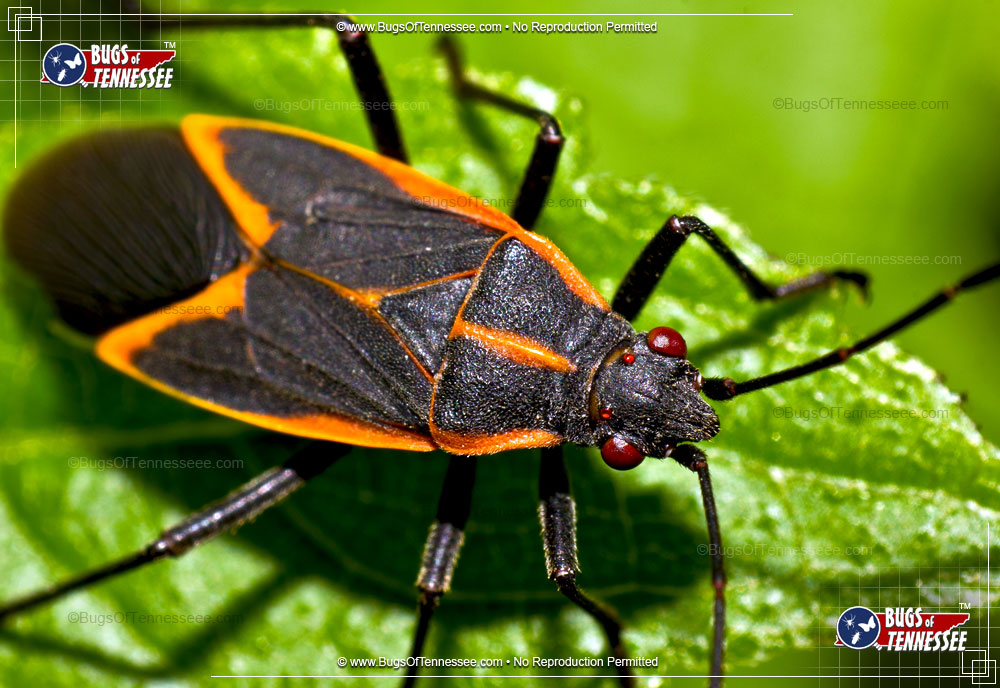Insect Order (Hemiptera)
HEMIPTERA (TRUE BUG)
Piercing and sucking mouthparts - or rostrum - are what differentiate True Bugs from the rest and this means that the insects generally fed on plants as a natural diet. Around 12,000 such species are recognized in North America alone. These bugs can be found on land and in the water and have thick wings kept close to the body. A prominent identification feature is the triangular-shaped scutellum located on the thorax aft of the protonum. The Hemiptera order covers True Bugs, Cicadas, Hoppers, and related insects.
Taxonomy
The Taxonomic Breakdown is the scientific way to categorize a partocular insect species from its largest group (Animalia) to its smallest (variable). The Genus and Species categorizations taken together make up the species' scientific name shown above, in this case Boisea trivittata.
Kingdom: Animalia
Phylum: Arthropoda
Class: Insecta
Order: Hemiptera
Family: Rhopalidae
Genus: Boisea
Species: trivittata
Characteristics
Antenna: Antenna are noticeably apparent on this insect.
Daytime: Typically seen during daylight / daytime hours.
Garden Pest: Known to be destructive of garden plants.
Outdoors: Typically found across the great outdoors.
Pest: Generally considered a pest to humans.
Six-Legged: Six legs are common to this insect.
Description
The Boxelder Bug has been identified by site users by the following descriptors:
black orange red gray grey six-legged outdoors daytime antenna garden pest
Sighting Guide
The general likelihood of encountering this insect based on a given month of the year in the state of Tennessee. Generally, the best sighting months are June through August with peak occurring in July.
Size
Below is a representation of the 'smallest-small' and 'largest-large' sizes commonly associated with the Boxelder Bug. Due to monitor differences, sizes may not be exact on your particular screen. Conversions to millimeters are provided for convenience.
Lowest-Low:
0.43 inches
(11 mm)
Highest-High:
0.55 inches
(14 mm)
Diet
It has a typical diet of the following: leaves; garden / outdoor greenery.
Identifying Colors
Below you will find the colors most commonly associated with the Boxelder Bug. Both Primary and Secondary colors are represented in the showcase. Due to monitor differences, colors may not be exact representations.
Tennessee County Reach
The Boxelder Bug can be found in the following Tennessee counties:
Anderson; Bedford; Benton; Bledsoe; Blount; Bradley; Campbell; Cannon; Carroll; Carter; Cheatham; Chester; Claiborne; Clay; Cocke; Coffee; Crockett; Cumberland; Davidson; De Kalb; Decatur; Dickson; Dyer; Fayette; Fentress; Franklin; Gibson; Giles; Grainger; Greene; Grundy; Hamblen; Hamilton; Hancock; Hardeman; Hardin; Hawkins; Haywood; Henderson; Henry; Hickman; Houston; Humphreys; Jackson; Jefferson; Johnson; Knox; Lake; Lauderdale; Lawrence; Lewis; Lincoln; Loudon; Macon; Madison; Marion; Marshall; Maury; McMinn; McNairy; Meigs; Monroe; Montgomery; Moore; Morgan; Obion; Overton; Perry; Pickett; Polk; Putnam; Rhea; Roane; Robertson; Rutherford; Scott; Sequatchie; Sevier; Shelby; Smith; Stewart; Sullivan; Sumner; Tipton; Trousdale; Unicoi; Union; Van Buren; Warren; Washington; Wayne; Weakley; White; Williamson; Wilson
Boxelder Bug Picture (1)
1 of 1

Close up image of an adult Boxelder Bug at rest.; Credit: Noah B., United States.
This image is original to
www.InsectIdentification.org; Used with Permission.
